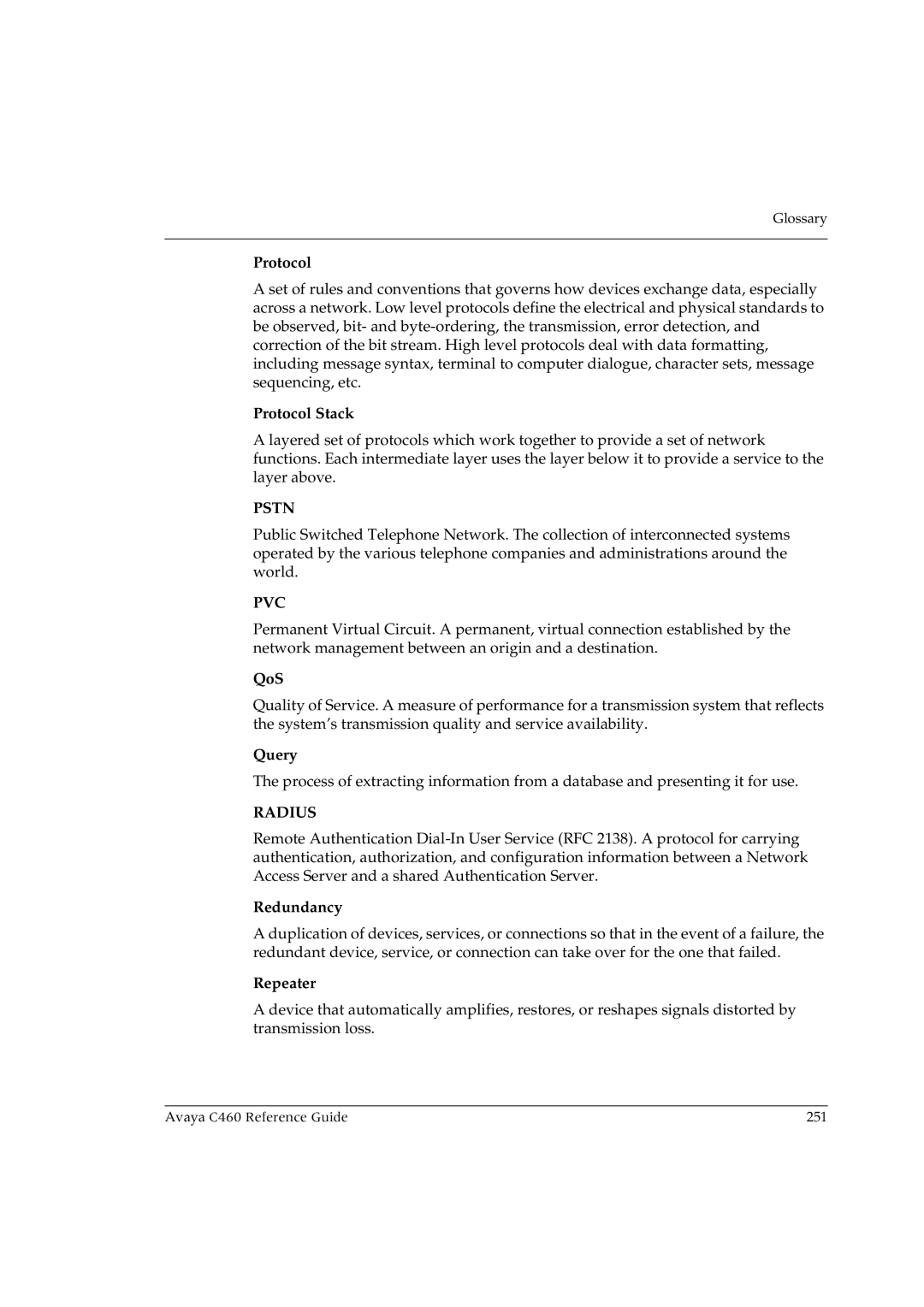
Glossary
Protocol
A set of rules and conventions that governs how devices exchange data, especially across a network. Low level protocols define the electrical and physical standards to be observed, bit- and
Protocol Stack
A layered set of protocols which work together to provide a set of network functions. Each intermediate layer uses the layer below it to provide a service to the layer above.
PSTN
Public Switched Telephone Network. The collection of interconnected systems operated by the various telephone companies and administrations around the world.
PVC
Permanent Virtual Circuit. A permanent, virtual connection established by the network management between an origin and a destination.
QoS
Quality of Service. A measure of performance for a transmission system that reflects the system’s transmission quality and service availability.
Query
The process of extracting information from a database and presenting it for use.
RADIUS
Remote Authentication
Redundancy
A duplication of devices, services, or connections so that in the event of a failure, the redundant device, service, or connection can take over for the one that failed.
Repeater
A device that automatically amplifies, restores, or reshapes signals distorted by transmission loss.
Avaya C460 Reference Guide | 251 |
